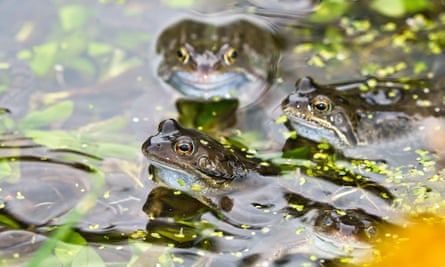I chanced on why apparently wholesome amphibians had been being wiped out – Guardian

It was while we had been sitting and talking in a lodge bar on the main global congress of herpetology that the world’s amphibian experts realised there was a topic: frogs, toads, salamanders and newts had been disappearing in their thousands across the world and no-one understood why.
No longer a single talk on the 1989 congress on the University of Kent had mentioned the keen disappearance of the world’s amphibians. Nevertheless scientist after scientist had the identical memoir: from Central The united states to Australia, they had been vanishing.
The year earlier than, I had joined the Zoological Society of London as a veterinary pathologist. It was my job to determine why animals had died. Quickly after I started, people of the final public began calling up London Zoo with news that dozens of frogs had died in their backyard without explanation. More and more more of those reviews began to reach lend a hand in. I started testing the dumb frogs to search out out what was occurring as portion of a PhD, and chanced on a ranavirus had been spreading via frogs in England.
Even though it was already acknowledged in the US, this was the main time a ranavirus had been chanced on to be killing wild frogs in Europe. I offered my findings, which ended in an invitation to Australia to assist with a brand new mystery. A master’s pupil was taking a gape into a string of unexplained amphibian deaths in a Queensland rainforest.

The animals that had been dying there appeared wholesome: the tissues had been intact, there had been no parasites and so that they’d been examined for viruses and micro organism. Nothing. They had been upright dumb.
Nevertheless while reviewing the evidence, I realised I had viewed this earlier than. On a talk over with to Melbourne Zoo a few years earlier, I had been proven some tadpoles of a species of frog in Queensland that was at risk of extinction. They thrived as tadpoles but died after turning into frogs. All of the pathology reviews had chanced on the frogs to be wholesome – except for now not being alive – but for the presence of an unknown organism in the skin.
With the master’s pupil, I regarded on the skin of the frogs we had been examining from the Queensland rainforests. Below a microscope, they’d the identical keen organisms that I had read about in the pathology reviews at Melbourne Zoo. So we jam up an experiment. We uncovered a little quantity of wholesome frogs to the infected skin. They all died – and so all of them had the organism rising in their skin.

On the identical time, I knew colleagues in Panama had been taking a gape into the identical tell. I advised them to gape on the skin of their dumb frogs to gape in the event that they’d the identical an infection. They did. We build our outcomes collectively and in 1998 we printed them, and launched to the world that a fungus – later known as Batrachochytrium dendrobatidis – was infecting and killing amphibians globally. It attacked their skin, causing the frogs to have a surprising coronary heart assault and die.
Varied researchers have since verified our outcomes and gone on to search out a lot of lines of the fungus. The most deadly strain appears to simplest be about 100 years frail, per chance transported across the world by humans, and it continues to wipe out amphibians.
To this level, nearly 100 amphibian species are acknowledged to have disappeared previously 50 years and quite a lot of have declined in quantity. One affected species I am finding out is the mountain chicken frog – once long-established in the Caribbean – which is down to the closing 30 other folks acknowledged about in the wild. I would possibly per chance per chance well merely outlive it. To me, this disease is a reminder of the adverse influence humanity can have on the planet and its biodiversity. This disease per chance would not exist without us. We must bring collectively a mode to dwell in steadiness with the unbelievable species with which we allotment the Earth.
As advised to Patrick Greenfield


